#linen collection 2019
Explore tagged Tumblr posts
Text

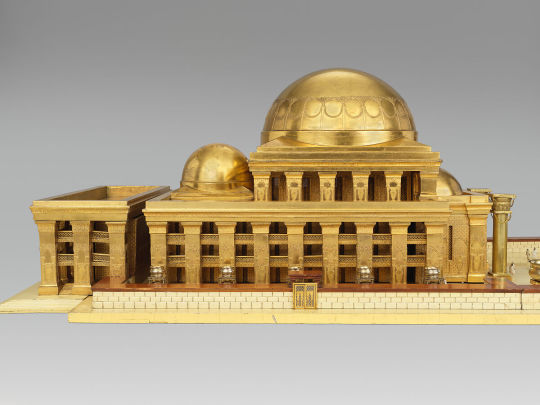



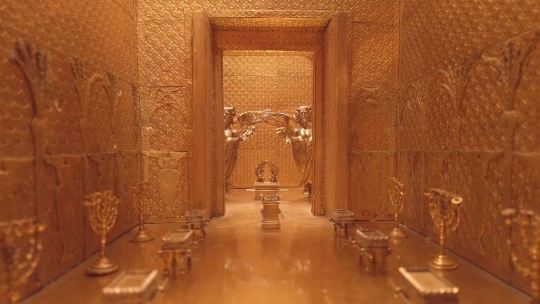
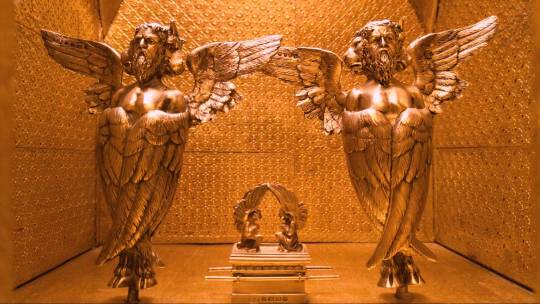
Designed by Thomas Newberry (England, Birmingham 1811-1901). Nineteenth-Century Architectural Model of King Solomon’s Temple in Jerusalem, 1883. Gilded wood, gilded carton pierre; gilded silver, gilded bronze; enamel, linen, 26 x 46 x 48 in. (66 x 117 x 122 cm). The Metropolitan Museum of Art, New York, Gift from Albert Kalimian, in honor of Victoria Kalimian and in memory of Rouhollah Kalimian, 2019 (2019.66.1a–o–.95)
https://www.metmuseum.org/art/collection/search/786829
https://www.metmuseum.org/blogs/metkids/2020/solomons-temple-model-judaica
3 notes
·
View notes
Text
Week 6 – Slow Fashion: Influencers, Greenwashing, and the Eternal Shein Cycle
════════════════════════════════════ ✦ . ⁺ . ✦ . ⁺ . ✦ . ⁺ . ✦ . ⁺ . ✦ . ⁺ . ✦ . ︶⊹︶︶୨୧︶︶⊹︶︶⊹︶︶୨୧︶︶⊹︶︶⊹︶︶୨୧︶︶⊹︶︶⊹
So, let’s talk slow fashion. You know, that thing where people tell you to stop buying $5 crop tops from certain retailers and invest in “timeless, sustainable pieces” (aka a $300 basic linen dress that you definitely can’t afford). But is slow fashion really just for the elite? And are influencers actually helping or just hopping on another aesthetic trend?
The Good, The Bad, and the "That’s Just Greenwashing in a Cute Font"
Influencers play a huge role in the slow fashion movement. As McKinsey & Company (2021) points out, consumer awareness is at an all-time high, making transparency more crucial than ever. On one hand, influencers raise awareness about sustainability, ethical labor, and overconsumption. On the other… they’re still influencers. Meaning:
Encouraging mindful consumption? Yes. Promoting yet another expensive brand while calling it “minimalist chic”? Also yes.
As Domingos et al. (2022) discuss, consumer behavior around slow fashion is shaped by accessibility and marketing, meaning that the people most likely to engage are the ones with the money and privilege to do so. Meanwhile, brands love to slap a “green” label on their collections (looking at you, H&M Conscious), but as Kopnina (2019) points out, that doesn’t always mean actual sustainability.
Which brings us to…
The Influencer Paradox: Are They Helping or Just Selling a Vibe?
Social media influencers are basically the middlemen of activism now, turning important issues into digestible, aesthetically pleasing posts. Platforms like TikTok and Instagram help slow fashion reach a wider audience (Chi et al., 2021), but let’s be real: how many of these influencers were pushing haul culture a year ago?
"STOP BUYING FAST FASHION!" – says the influencer wearing a brand-new $250 set from a "sustainable" brand that pays workers pennies.
Meanwhile, actual slow fashion advocates like Venetia La Manna and Tiffany Ferguson are out here calling out wage theft, overproduction, and the industry’s hypocrisy.

Slow Fashion Needs to Be for Everyone
Slow fashion shouldn’t be just another rich people aesthetic—it should be about making sustainable clothing accessible. Until then, thrifting, swapping, and upcycling are the real MVPs.

════════════════════════════════════ ✦ . ⁺ . ✦ . ⁺ . ✦ . ⁺ . ✦ . ⁺ . ✦ . ⁺ . ✦ . ︶⊹︶︶୨୧︶︶⊹︶︶⊹︶︶୨୧︶︶⊹︶︶⊹︶︶୨୧︶︶⊹︶︶⊹
Reference List
Chi, T., Gerard, J., Yu, Y., & Wang, Y. (2021). A study of U.S. consumers’ intention to purchase slow fashion apparel: Understanding the key determinants. International Journal of Fashion Design, Technology and Education, 14(1), 101-112. https://doi.org/10.1080/17543266.2021.1872714
Domingos, M., Vale, V. T., & Faria, S. (2022). Slow fashion consumer behavior: A literature review. Sustainability, 14(5), 2860. https://doi.org/10.3390/su14052860
Kopnina, H. (2019). Green-washing or best case practices? Using circular economy and Cradle to Cradle case studies in business education. Journal of Cleaner Production, 219, 613-621. https://doi.org/10.1016/j.jclepro.2019.02.045
McKinsey & Company. (2021). The state of fashion 2021. https://www.mckinsey.com/industries/retail/our-insights/state-of-fashion
0 notes
Text
WEEK 6
slow fashion is digital citizenship’s secret weapon (and your closet’s glow-up) 🌿✨
1. digital citizenship: where hashtags meet hemp shirts 🧵💻
theory: “using tech to fight fast fashion’s dumpster fire” (Council of Europe, 2022).
example: influencers like @venetialamanna using Instagram Reels to dissect Shein’s labor practices. Translation: turning “haul culture” into “call-out culture.”
example: #WhoMadeMyClothes campaigns on Tumblr, where users tag brands demanding transparency. Vibe check: digital citizenship = holding Zara’s feet to the fire.
2. slow fashion 101: thrifting is the new rizz ♻️👗

definition: “sustainable fashion is not just linen sacks and Birkenstocks” (Lai et al., 2017).
principles:
no child labor (obvi).
materials that don’t murder the planet (recycled polyester > plastic oceans).
pay workers like, actually living wages (revolutionary, ikr).
build supply chains that aren’t built on exploitation (Domingos et al., 2022).
3. fast fashion’s crimes: a trauma dump 💔🌍

environment: 10% of global carbon emissions come from fashion (aka more than all flights and shipping combined).
waste: 11.9M tons of clothes trashed yearly in the U.S. alone. Burberry literally burned $36M of unsold merch to “maintain exclusivity” (Brewer, 2019).
labor: Garment workers in Bangladesh earn 15M/year. Math is not mathing.
4. slow fashion icons: the chaotic good of tumblr 👑📱
@bigsisterswap: A thrift collective where you trade your 2014 Tumblr graphic tees for vintage band shirts. No money, just vibes.
@tiffanyferguson: Posts “slow fashion moodboards” pairing DIY tie-dye tutorials with rants about greenwashing.
Second Runway: A TikTok collective turning red carpet looks into upcycled masterpieces. “We don’t buy new sequins—we steal them from H&M’s landfill.”
5. corporate citizenship: when brands try (and fail) to be ethical 🤑🚮
theory: “CSR is just PR in a recycled tote bag” (McCosker et al., 2016).
example: Zara’s “Join Life” collection uses 5% sustainable materials. Congrats, you’re 95% villain.
example: H&M’s “Conscious” line—babe, polyester microplastics aren’t conscious of anything except choking sea turtles.
references (but make it tumblr academic): 📚
Council of Europe (2022). Digital Citizenship Education Handbook.
Lai, K. et al. (2017). “Slow Fashion’s Radical Roots.” Journal of Sustainable Clownery.
Domingos, M. et al. (2022). “Fast Fashion’s Funeral: A Guide to Ethical Business Models.”
Brewer, M. (2019). “Burberry’s Arsonist Era.” Vogue Business.
McCosker, A. et al. (2016). Negotiating Digital Citizenship: Control, Contest and Culture.
final take: Slow fashion isn’t about buying less—it’s about giving a shit. Use your digital citizenship powers to drag fast fashion, boost thriftfluencers, and remember: the most sustainable outfit is the one already rotting in your closet. 💅
#slow fashion manifesto#digital citizenship cringe#thrifted fit check#burn H&M 2023#long post#sorry not sorry#mda20009#digital communities#branding#cosmetics
0 notes
Text
Eco-Friendly Comfort: Global Organic Bedding Market Forecast to 2030
The global organic bedding market size is expected to reach USD 1.34 billion by 2030, registering a CAGR of 5.4% during the forecast period, according to a new report by Grand View Research, Inc. The significant market growth is attributed to increasing demand for high-end bedding products impacted by the growing inclination towards luxurious lifestyles among consumers. Moreover, growing awareness about the importance of sleep and its impact on health is encouraging consumers to invest in quality products especially mattresses and bed linens, thereby contributing to the growth of the market.
Organic cotton bedding has been gaining acceptance among consumers owing to multiple factors such as natural durability as they are biodegradable. In addition, such beddings are produced through sustainable methods to attain higher quality and hypoallergenic state due to the lack of chemical additives. The increasing influx of new players in this category is expected to result in greater visibility and credibility of these products, thereby propelling market growth over the forecast period. For instance, one of the new entrants in this category is King Koil, with the aim to promote a healthy lifestyle has introduced the Natural Response EcoHybrid collection that offers mattresses produced from natural and eco-friendly materials. The top line is constructed with certified organic components.
Among various types of bedding products, bed linen was estimated to dominate, thereby accounting for a share of more than 34.3% of the global market in 2023. Growing preference for sustainable and eco-friendly products to enhance sleep experience, bed linens such as sheets, pillow, bed covers, and duvet covers are witnessing significant demand among consumers. Bed linen products are largely associated with healthy sleep, which in turn contributes to improved brain health, learning, and stabilizing mental health symptoms. Thereby, the market is anticipated to witness the dominance of the product category with higher projected growth in the forecast period. Moreover, organic sheets with cooling attributes have popularized the acceptance of these products. These sheets are produced with low thread count such that fabric is more breathable with adding natural fibers such as bamboo. Thus, new product developments are expected to witness the growth of the product in the forecast period.
The global market is highly competitive in nature. Top players operating in the market are Good Night Naturals, Parachute Home, The Natural Sleep Store, COYUCHI, L.L.Bean, Boll and Branch, The Company Store, Magnolia Organics, WJ Southard, and The Organic Mattress. Market players are adopting product development strategies to increase product lines. Moreover, companies are focusing on expanding their production capacity and are adopting innovative technologies owing to meet consumer demand for organic bedding. For instance, in March 2019, Mitre Corporation introduced a new eco-friendly line of products under The Eco Collection, such as bed linen, towels, duvets, pillows, and robes produced from 100% organic cotton with GOTS (Global Organic Textile Standard) certification. Also, in January 2019, Parachute Home launched an organic and eco-friendly mattress with its direct-to-consumer approach across the U.S.
Organic Bedding Market Report Highlights
The global market is expected to exhibit a CAGR of 5.4% from 2024 to 2030 and is anticipated to reach a value of USD 1.34 billion by 2030
The Asia Pacific is estimated to register a significant growth during the forecast period, driven majorly by high demand and product launches in India and China.
The bed linens segment held a revenue share of 34.3% in 2023 and is expected to register a healthy growth over the forecast period.
Organic Bedding Market Segmentation
Grand View Research has segmented the global Organic Bedding market report based on product, raw material, end-use, distribution channel, and region:
Organic Bedding Product Outlook (Revenue, USD Million, 2018 - 2030)
Mattress
Bed Linen
Pillows
Blankets
Others
Organic Bedding Raw Material Outlook (Revenue, USD Million, 2018 - 2030)
Cotton
Linen
Others
Organic Bedding End Use Outlook (Revenue, USD Million, 2018 - 2030)
Household
Commercial
Organic Bedding Distribution Channel Outlook (Revenue, USD Million, 2018 - 2030)
Hypermarkets & Supermarkets
Convenience Stores
Specialty Stores
Online
Others
Organic Bedding Regional Outlook (Revenue, USD Million, 2018 - 2030)
North America
US
Canada
Mexico
Europe
Germany
UK
France
Italy
Spain
Asia Pacific
China
Japan
India
Australia
South Korea
Latin America
Brazil
Middle East and Africa (MEA)
South Africa
Key Players in the Organic Bedding Market
Good Night Naturals
Parachute Home
The Natural Sleep Store
COYUCHI
L.Bean
Boll & Branch
Magnolia Organics
The Company Store
WJ Southard
The Organic Mattress
Order a free sample PDF of the Organic Bedding Market Intelligence Study, published by Grand View Research.
0 notes
Text
"This year, the Duchess seems to have approached dressing for all of the various facets of her life with fresh confidence.
"For the low-key day-to-day in Montecito (school runs, play dates, lunches at Tre Lune), there’s relaxed La Ligne denim and white linen shirts by Anine Bing – quality basics elevated with the sort of accessories any woman who aspires to the Rich Mom aesthetic has on her wish-list. (Namely Cartier Juste Un Clou jewellery, Chanel ballet flats and a Lady Dior.) And look, we’ve known it since she and Harry made their very first public appearance as a couple: Meghan looks great in jeans and a white shirt.
"Also working: the neutral separates from St Agni, Gabriela Hearst and Khaite she now relies on when in business mode. Meghan – who presides over her own fledgeling American Riviera Orchard empire in addition to holding minority stakes in several female-owned ventures – now subscribes to a sort of luxe “California founder” chic (a look best embodied by Gwyneth Paltrow at her ski trial in, ironically enough, Utah), that has successfully taken her from SXSW to the G9 Summit to the Our Place HQ.
"Rounding all of this out: gowns. The actress-turned-duchess has been navigating the razzle dazzle of the red carpet since she was playing Rachel Zane on Suits, switching out the Tig-approved crop tops and shrobing for Clare Waight-Keller’s Givenchy once she married an heir to the throne. But her 2024 outings had a new sense of ease.
...
"In her guest editor’s letter for the September 2019 issue of British Vogue, the Duchess of Sussex described how she sought to spotlight 'Commonwealth designers, ethical and sustainable brands,' as well as 'heritage, history and heirloom'. In many ways, Meghan – who this year threw her weight behind Cesta Collective, an ethical handbag brand that preserves artisan basket weaving techniques, and styles the priceless jewellery she inherited from her late mother-in-law with her eco-friendly denim – demonstrates the same priorities she always has. She just seems to be having more fun with it."
1 note
·
View note
Text
Home Bedding Market Size To Reach $172.36 Billion By 2030
The global home bedding market size is expected to reach USD 172.36 billion by 2030, registering a CAGR of 7.4%from 2024 to 2030, according to a new report by Grand View Research, Inc. The home bedding industry is in a state of flux. Shifting retail models, along with changing consumer preferences, encourage manufacturers to continuously form new strategies to combat the challenges. The overall business arena is undergoing disruption owing to the rapid adoption of online retailing. For instance, in February 2021, Magnolia began offering the complete home textiles collection that includes duvets, shams, and sheet sets in full, queen, king, and California king mattress sizes through its website.
The bedding industry is continuously evolving, with innovative technologies and advancements being introduced to enhance the comfort, durability, and functionality of bedding products. Consumers are also becoming more aware of the importance of quality sleep for their overall health and well-being. Hence, they are looking for bedding products that offer optimal comfort and support. Additionally, the growing concerns about environmental sustainability are driving market growth, with consumers demanding organic bedding options such as organic cotton or bamboo bedding.
The rising need for comfort and luxury, along with an increasing number of houses being purchased or rented every year, drives the growth of the market. Similarly, the demand for organic bedding products along with smart products has also been positively influencing the market. In August 2019, Boll & Branch, which sells sustainably sourced sheets, pillows, mattresses, and towels, raised USD 100 million in strategic investment.
Increased residential expansion across areas, indicating increased house construction and building permits, is expected to revamp Germany’s market growth. According to the Federal Statistical Office (Destatis), the construction of a total of 32,500 dwellings was permitted in Germany in November 2020. Compared with the corresponding period of 2019, this is an increase of 8.9% or 2,700 dwellings.
Manufacturers in the Indian home bedding industry have been implementing a low-cost sourcing strategy and making premium products at extremely low prices. Along with the availability of raw materials at a cheap price, the labor and production costs in the country are also low. The abundant availability of cotton, wool, silk, jute, and handloom further benefits the cost and quality of home textiles and bedding products.
GHCL, a leading manufacturer of home textiles in India, launched a traceable Egyptian cotton bedding brand called Nile Harvest in March 2019. The company has been selling these luxury bedding products mainly in the U.S. and U.K. markets. The company has partnered with Tailorlux GmBH of Germany to use its IntegriTEX technology for the marking and traceability of Egyptian cotton. It is one of the largest manufacturers and exporters of bed sheets, bed linen, comforter sets, and sheet sets in India.

Home Bedding Market Report Highlights
By type, bed linens held the largest share of around 30% in 2023. This dominance is primarily due to the increasing consumer preference for quality over brands. This has encouraged bedding industry manufacturers to offer new and improved quality products with attractive designs. With the increasing preference for luxury bedding products, companies are focusing on introducing plant-based bed linen that claims to be softer than cotton and provides breathability and moisture control
The Asia Pacific home bedding market accounted for the largest share of over 37% in 2023 and is expected to witness the fastest growth over the forecast period. The regional demand for home bedding products is anticipated to grow due to the increase in the purchasing power of consumers, rising housing constructions, and growing consumer awareness regarding quality as well as organic bedding products
The offline distribution channel segment dominated the market by accounting for 68 share in 2023. This distribution channel is preferred by consumers as it allows them to physically inspect the products, which is particularly important for items like bedding where comfort and quality are key factors
Home Bedding Market Segmentation
Grand View Research has segmented the global home bedding market on the basis of on type, distribution channel, and region:
Home Bedding Type Outlook (Revenue, USD Million; 2018 - 2030)
Bed Linen
Mattress
Pillows
Blankets
Mattress Toppers & Pads
Others
Home Bedding Distribution Channel Outlook (Revenue, USD Million; 2018 - 2030)
Offline
Supermarket/Hypermarket
Specialty Stores
Others
Online
Home Bedding Regional Outlook (Revenue, USD Million; 2018 - 2030)
North America
U.S.
Canada
Mexico
Europe
UK
Germany
France
Italy
Spain
Asia Pacific
China
India
Japan
Australia & New Zealand
South Korea
Central & South America
Brazil
Argentina
Middle East & Africa
UAE
South Africa
List of Key Players in the Home Bedding Market
Acton & Acton Ltd.
American Textile Company
Tempur Sealy International, Inc.
Bombay Dyeing
Casper Sleep Inc.
Beaumont & Brown
Pacific Coast Feather Company
Crane & Canopy Inc.
Peacock Alley
Purple Innovation, Inc
The White Company
Portico New York
0 notes
Text

Harmonia Rosales (American, born 1984)
https://www.instagram.com/honeiee?igsh=MW9xdm5mZTMwdXRjag==
Yemaya’s Ascension Into The Waters, 2019
Oil on linen
24 x 24 inches
Private collection
Artist statement: “This painting represents the moment when Yemayá gives herself to the waters in order to reach all her children who have been forced into the transatlantic slave trade. The orisha of the Atlantic Ocean sleeps in a dreamlike state, slowly sinking into the watery bosom of a pond. She grasps in her right hand cowrie shells, symbolizing her association with the ocean, while her left hand is plunged below the water’s surface and under her breast. The orisha’s voluptuous body in medium brown tones emphasizes her beauty, embracing her womanhood. During her slumber, she is encircled by luxurious textiles that lend to her convalescence. Flower offerings for Yemayá, such as roses and white poms, dot the waters.”
1 note
·
View note
Text
Sustainable Furniture: Sabai
Sabai about:
[...] In 2019, [Phantila] Phataraprasit co-founded Sabai—a Thai word that roughly translates to comfortable or relaxed—with business partner and college friend Caitlin Ellen.
[...] “The core of why we wanted to start Sabai is to make sustainable furniture that was accessible to people in our demographic, knowing that we are part of an age group that cares the most about this and wants to purchase according to those values, but are limited by things like budget, lifestyle and convenience,” she says.
Sabai CEO interview:
[Phataraprasit]: [...] We started an Instagram account that served as a great tool to leverage our community to understand what they cared about. When we started the design process, we would always go back to the Instagram community and poll them on, "What do you use your couch for?" "Do you like wide arms?" "Do you like thin arms?" It seems so simple in terms of, obviously, a couch is for sitting, but the insights that we received from that were helpful in informing the design process."
[...] It was definitely difficult for two relatively young women who had never started this type of company before and in a relatively traditional space to find any factory that was willing to work with us and basically take a bet on us. [...] When we finally did find a manufacturer who wanted to work with us, that was amazing, [...], but for us, we [...] had to find the sustainable alternatives to every component of the product so that was definitely a whole process in and of itself.
Sabai Materials blog post:
[...] OEKO-TEX certified hemp fabric is used in our Evergreen slipcovers [...] We wanted to ensure we were using [natural fibers] that uses less water than the cotton and linen options we’ve seen offered.
In place of traditionally used polyester upholstery fiber, we are using a natural fiber material made from a mix of coconut fibers and natural rubber wherever possible. The wooden legs are finished in a water based finish and the frame construction uses a non-toxic, solvent free glue.
[Sabai furniture] are designed to be assembled and disassembled easily with standard hardware and tools. Second, both seating collections are made to be repaired, individual parts can be purchased to replace in case of damage and cushion covers and slipcovers can be replaced to ensure the longevity of the product.
B Corp status of Sabai:
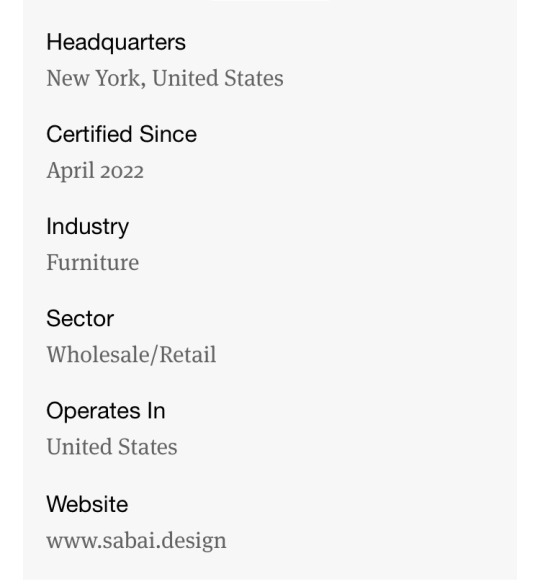
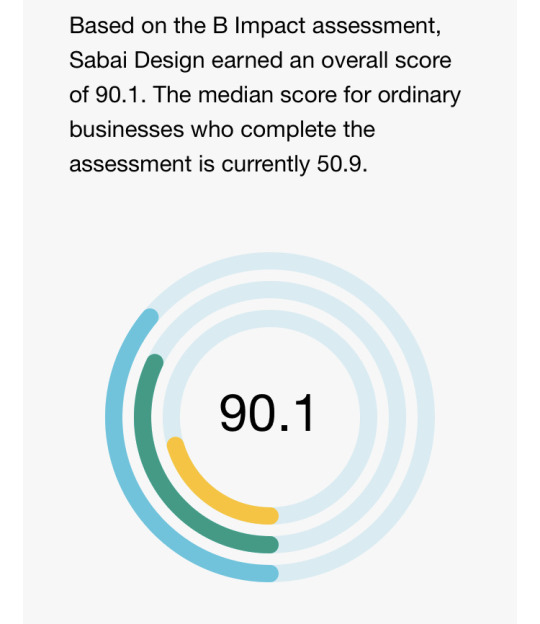
Sabai third-party product review:
#found this while considering shopping for a new couch#i think i might just invest in getting mine reupholstered/framed fixed to extend its longivity but#found this company in my search (for future reference) for sustainable furniture thats not necessarily second hand#my greens#sabai#sabai furniture#aapi#sustainable economy#sustainable furniture#furniture#interior design#non toxic#sustainable industry#women owned business#home health#green link
1 note
·
View note
Link
Check out this listing I just added to my Poshmark closet: All Things Mochi Pink Linen Nia Dress Embroidered Ruffle L New.
0 notes
Text
Sandro
The ready-to-wear-brand Sandro, known for their casual but elegant streetwear has acknowledge its responsibility towards the environment. Despite not being sustainable yet, the brand has come up with a specific plan. Sandro aims to make by 2025 over 60% of their products eco-responsible. By the end of this year, 80% of their suppliers will be certified. Besides, since 2019 they reduced 20% of their clothing pieces. Furthermore, they permanently removed the usage of animal fur and exotic leathers from their collections.

Sandro Autumn Winter 2022-2023 Ready-to-Wear

Autumn Winter 2022-2023 Ready-to-Wear

Sandro- Spring Summer 2022 Ready-to-Wear

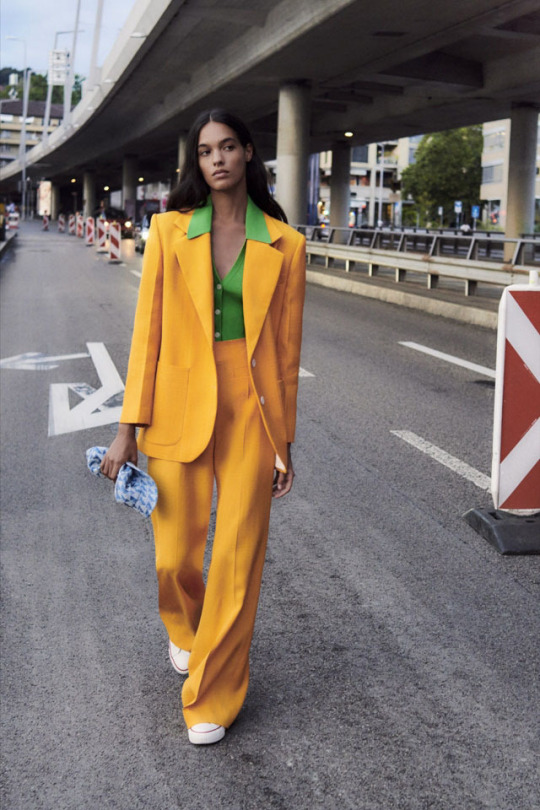
Spring Summer 2022 Ready-to-Wear
PRODUCTION PROCESS
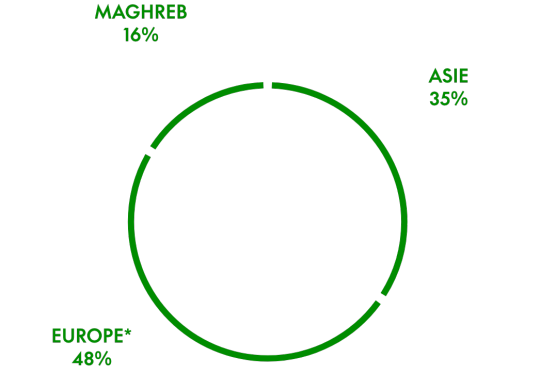
Production takes place at 110 partner sites in 30 countries, including Portugal, France, Italy, Turkey, China, Serbia, Bulgaria and Tunisia. When selecting partners, we use a process based primarily on the search for technical—sometimes rare—expertise, as well as social and environmental audits.
In addition to the suppliers with whom we've fostered long-standing partnerships, we are constantly looking to strengthen the traceability of our collections to reveal every step of our production chain, right back to the raw material.
Our daily concern is also to produce in a better way, i.e. produce as close as possible to what we need. This is why we've implemented a new set of demand-planning tools in order to better adjust the volumes produced, increase distribution agility and therefore limit the amount of leftover stock at the end of a season.
SUPPLIER AUDITING
The social and environmental compliance policy for our suppliers is based on the following measures:
• All suppliers must sign a code of conduct outlining our requirements in detail.
• When referencing a new supplier, social audits or the social certifications of their manufacturing sites must be collected and reviewed.
• Social and environmental audits must be carried out, whether conducted by Sandro or requested by other companies according to the standards recognised by the SMCP Group (BSCI, Sedex, WRAP, WCA, and the SA8000 for social; ISO 14001, bluesign, STeP by OEKO-TEX for environmental).
THEIR MATERIALS AND HOW TO CARE FOR THEM
The starting point for creating our clothing and accessories is the selection and production of the raw materials used to make them. Upstream of our value chains is also where the most significant part of our sector's environmental impact lies.
We take the greatest care in selecting the materials we use. Our aim is to offer our customers high quality materials—like cotton, linen, viscose, silk, wool and cashmere—which are produced and processed using methods with a reduced environmental impact.
Keen to improve the environmental footprint of the materials making up our creations, we are now focusing our efforts on sourcing the materials we use most in our collections sustainably: organic cotton, Responsible Wool Standard (RWS) certified wool, Leather Working Group (LWG) certified leather and recycled polyester. What's more, 100% of our jeans are treated using a process that uses 95% less water than traditional treatments.
These materials represent a real challenge from an economic and supply perspective. Only available in limited quantities, we do everything we can to ensure their availability by strengthening the partnerships we have with our suppliers.
in 2022: 52% of our men's and women's collections are made using materials and/or manufacturing processes with a lower environmental impact.
2025: 80% of our men's and women's collections will be made using materials and/or manufacturing processes with a lower environmental impact.
THEIR DEFINITION OF A MORE SUSTAINABLE PIECE
At Sandro, a product is considered more sustainable if it respects one or more of these criteria:
- at least 50% of its main material is organic, recycled or meets criteria for preserving ecosystems (forests, pastureland, etc.).
- its denim is treated using eim (environmental impact measuring) technology, saving 95% of water compared to traditional treatment techniques
- the tannery, for leather items, conforms to the best industry practices in terms of water consumption, energy consumption and the use of chemicals.
0 notes
Text

Keith Crowley “Longwood Run (Nocturne)”, 2019, Oil on linen (left) and “Mooring Fields (Twilight)”, 2021 (right)

Kenny Jensen, “I Didn’t Forget You (The Clearing)”, 2023 (left) and “I Didn’t Forget You (Papa’s Van)” 2023 (right)

Alison Tirrell “untitled (It’s all under control)”

Elizabeth Barenis, “The Creek Drank the Cradle”, acrylic on canvas
The Factory is a massive space in the Warehouse Arts District in St. Pete that houses numerous galleries and artist spaces, as well as the Florida Wildlife Corridor Foundation, Museum of Motherhood (MOMMuseum), Fairgrounds St. Pete, and Daddy Kool Records. This past Saturday (10/14/23) was Second Saturday ArtWalk and there was a lot to see. On this page and the ones that follow are some of the highlights.
In Studio B, a temporary gallery space, was the group exhibition Soft Spoken (images above), which included artists Keith Crowley, Kenny Jensen, Alison Tirrell, Elizabeth Barenis, Raheem Fitzgerald, Kate Cummins, and Alfredo Christiano. This show remains on view by appointment with the artists.
In The Factory’s gallery space was the group exhibition Medium (images below).


Oil paintings by Luke Vest

Laurent Waldron "Road Killer", 2023, Latex and acrylic paint, rubber tire and "Last Rodeo" 2023, Acrylic paint, wirebrush frame
At the Florida Wildlife Corridor's gallery space Wild Space is Mickett/Stackhouse Studio's Circle of Water, a collection of paintings, drawings, and video by artists Carol Mickett and Robert Stackhouse continuing their explorations of environmental issues. This exhibition will remain on view until 1/13/24.


(Work by Mickett/Stackhouse Studio- "Mitigation Paintings: Green Shade Oak, Whale Pump, Mangrove Family, Mangrove Sea Wall, Green Swamp, Green Swamp Aqua Feeder, Whale Pump & Plankton, Shade Oak", Watercolor on paper)
About the above by the artists-
Mitigation Paintings further explore the ways in which natural resources can help to remedy and even forestall the damages of climate change. The swamps, whales and trees depicted are all "carbon sink," in other words they absorb CO2, among their other contributions.

Work by Mickett/Stackhouse Studio
At Heiress Gallery is the contemporary ceramics group exhibition Dirt, which includes work from several Tampa Bay artists including Babette Herschberger, Mike Cannata, Molly Duff, and John Byrd. This show is on view until 11/3/23.


Work by Babette Herschberger

Center sculpture Mike Cannata "Environmental Flux 2", 2023, Ceramics, wood, marble, enamel paint, rust; on the right Molly Duff "Lil'Dicki", 2023, Ceramic, yarn, steel
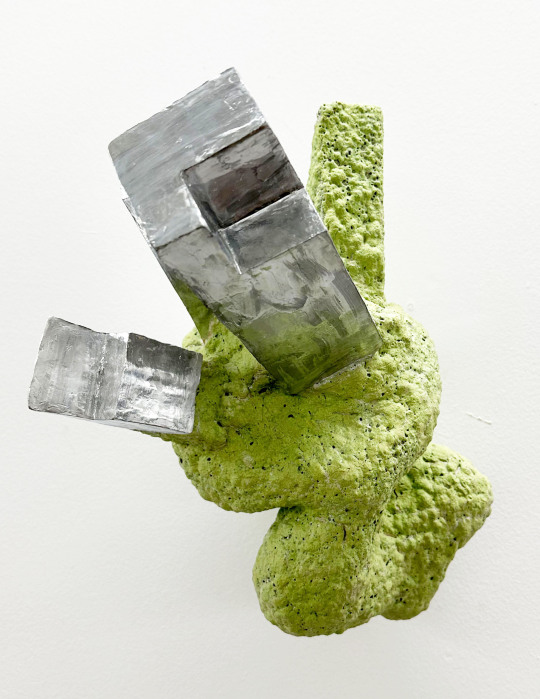
Mike Cannata, "Environmental Flux 3",2023, Ceramic, enamel paint

John Byrd "Memory Jug for Devotion and Dereliction", 2020, Ceramic, wood, mixed media
Two artists with studios in the building were showing work- Kate Cummins and Jason Hackenwerth. Hackenwerth also curated the Studio B show which has a piece by Cummins included.


Work above by Kate Cummins

Two works from Jason Hackenwerth's exhibition "Pilgrimage"
Finally, a recent addition to The Factory’s spaces- The Museum of Motherhood or MoM Museum.

(Work by Amy Wolf outside Museum of Motherhood)

About the museum from their website-
MoM is the first and only exhibition and education center devoted to the art, science, and herstory of women, m/others, and families inclusive of all reproductive identities. We celebrate the work of mothers and counter narratives that have kept women less visible while educating future generations. The Museum of Motherhood is empowering women and mothers to take their rightful place in the museum world.
MoM is a living museum. We grow, evolve, and transform according to YOU – our members, volunteers, and partners. That is why we encourage great conversations, support thought-provoking exhibits, and offer resources for people to engage in activities centered around identity and culture in a safe and inclusive environment. MoM encourages a deeper understanding of the labor and investment made by those birthing and raising the next generation as well as serving to deconstruct dominant stereotypes in order to increase our overall understanding of the family experience. We are awesomely made!
MoM creates, produces, and presents visual, literary, educational, academic, and performing arts exhibits and education that celebrate, nurture and support individuals with a special emphasis on identity, experience, and community. We keep abreast of changing birth technologies and give voice to a mom-made art movement through our actions while focusing on the social, psychological, physical, and economic realities embedded in these experiences. MoM connects students, women, men, m/others and families through reproductive identity, music, art, activism, and education for cultural, economic, and social awareness. MoM acts as a safe space for healing, inspiration, and illumination.
The current featured artist is Amy Wolf, who recently created work for Dunedin Fine Art Center’s 17th Annual Wearable ART runway fashion show.



Work above by Amy Wolf
#The Factory St. Pete#Alison Tirrell#Amy Wolf#Babette Herschberger#Ceramic Art#Ceramics#The Factory#Elizabeth Barenis#Fiber Arts#Molly Duff#Florida Wildlife Corridor#MOMMuseum#Florida Wildlife Corridor Foundation#Jason Hackenwerth#John Byrd#Kate Cummins#Keith Crowley#Kenny Jensen#Laurent Waldron#Luke Vest#Mickett/Stackhouse Studio#Carol Mickett#Daddy Kool Records#Mike Cannata#Alfredo Christiano#Mixed Media#Museum of Motherhood#Painting#Printmaking#Raheem Fitzgerald
0 notes
Text
Studio Project 2: Self-Directed Research
Artist Research
Francesco Clemente
Often classified as a Neo-Expressionist, Francesco Clemente makes rich gouache paintings and pastel drawings that range from distorted portraits to dreamlike scenes of violence and eroticism. Throughout his strange figurations, Clemente depicts corporeal details such as mutilated limbs, floating eyes, and intertwined bodies with a surrealistic detachment and sense of sublime symbology: Clemente, who splits his time between New York and Varanasi, India, is particularly inspired by Indian mysticism, art, and culture. The artist has exhibited in New York, Milan, Rome, London, Amsterdam, Madrid, and Zürich. Clemente’s work has sold for up to six figures on the secondary market and belongs in the collections of the Art Institute of Chicago, the Centre Pompidou, the Guggenheim Museum, the Metropolitan Museum of Art, the Museum of Modern Art, the Rubell Museum, the Stedelijk Museum, and the Tate.
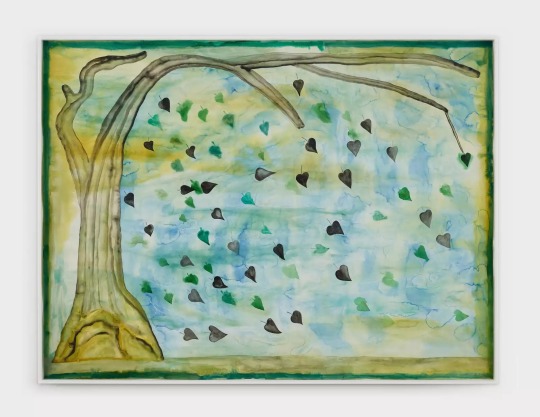
Air, 2021
Watercolor on paper
60 × 80 in | 152.4 × 203.2 cm
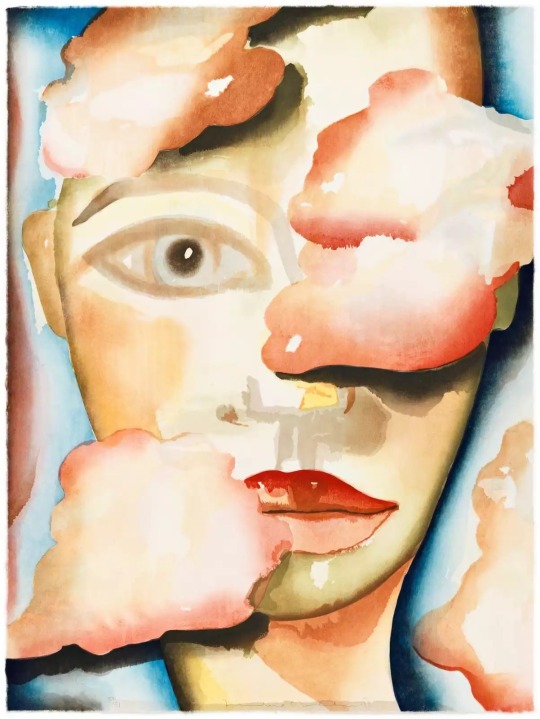
Air, 2007
Twenty-seven color Ukiyo-e woodcut hand-printed from 21 woodblocks
24 × 18 in | 61 × 45.7 cm
Edition 1/51
Inka Essenhigh
Inka Essenhigh (b. 1969, Bellefonte, PA) received her Master of Fine Arts from School of Visual Arts, New York, NY and her Bachelor of Fine Arts from Columbus College of Art & Design, Columbus, OH.
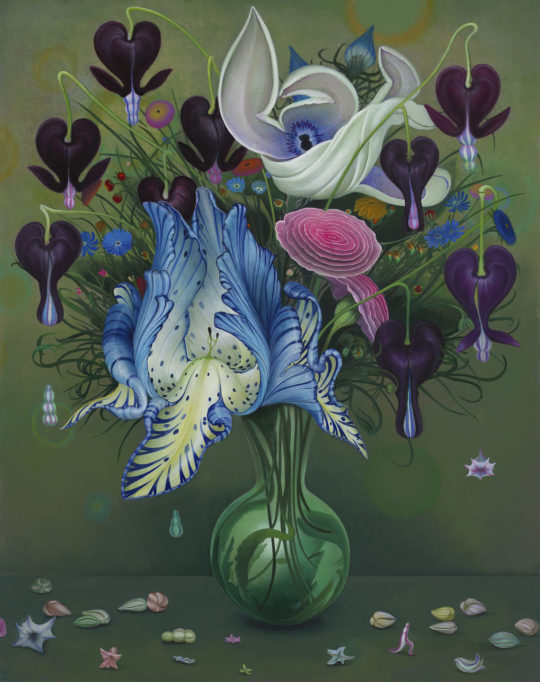
Inka Essenhigh, "Bleeding Hearts" (2021), Enamel on semi-rigid canvas, 121.9 x 96.5 cm, 48 x 38 in
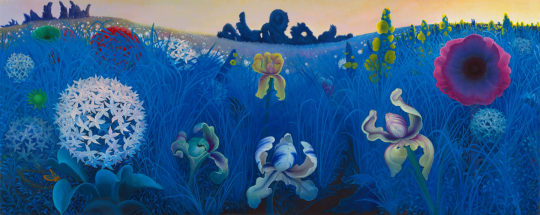
Inka Essenhigh, Blue Field, 2021
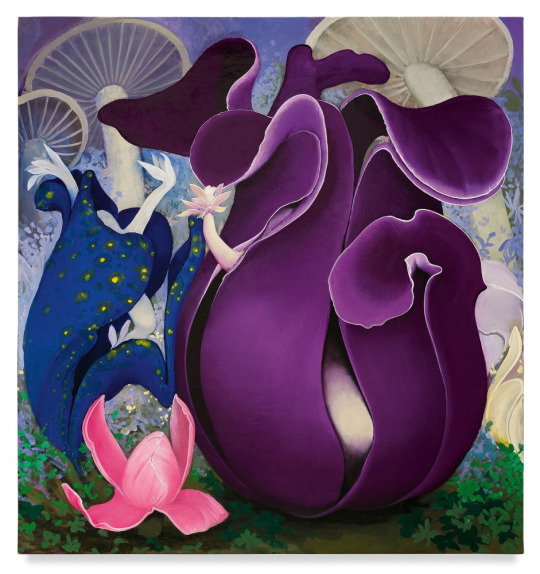
Inka Essenhigh, Purple Pods, 2019, Enamel on canvas, 34 x 32 inches
She paints a fluid, dreamy, fantasy landscape of animated, human-like trees and biomorphic beings – almost always women – veering towards a narrative art.
Chris Ofili
Introduction Christopher Ofili, (born 10 October 1968) is a British painter who is best known for his paintings incorporating elephant dung. He was Turner Prize-winner and one of the Young British Artists. Since 2005, Ofili has been living and working in Trinidad and Tobago, where he currently resides in the city of Port of Spain. He also has lived and worked in London and Brooklyn. Ofili has utilized resin, beads, oil paint, glitter, lumps of elephant dung and cut-outs from pornographic magazines as painting elements. His work has been classified as "punk art." WikidataQ1077608

Chris Ofili, The Great Beauty, 2020-2023, oil and charcoal on linen, 200 x 310 cm, 78 3:4 x 122 in © Chris Ofili. Courtesy the artist and Victoria Miro
"The Seven Deadly Sins are paintings in constant transition: between surface and depth, figure and foliage, light and dark; between mythology and religion, the sacred and profane."
"Nicholas Serota, who recently retired from his twenty-nine-year reign at the Tate, told me that Doig’s paintings “have a kind of mythic quality that’s both ancient and very, very modern. They seem to capture a contemporary sense of anxiety and melancholy and uncertainty. Lately, he’s gone more toward the sort of darkness we associate with Goya.”
"Ornamentation and visual excess have always featured in Ofili’s art"

Almost medieval … Chris Ofili, Requiem, 2023 (detail) commissioned for Tate Britain’s north staircase. Photograph: Thierry Bal/© Chris Ofili. Courtesy the artist
Emily Eleveth
Emily Eveleth is widely known for her paintings of jelly doughnuts. In fact, The Boston Globe wrote about this fascination in a 2008 article called “It’s time to paint the doughnuts.” She has had over 20 solo shows in museums and galleries on the East Coast, and received masters’ degrees from Smith College and the Massachusetts College of Art.
Spanning the boundaries between portrait, landscape, and object of projected desire, Emily Eveleth’s paintings form a genre unto themselves. Her ongoing series of paintings of doughnuts invests this unlikely subject with unexpected presence and identity. "Eveleth's paintings restlessly shift across a spectrum of meanings, covering along the way all the distances between opposing significances; prosaic and profound, profane and sacred, banal and intriguing, to say nothing of the axis between cool asexuality and gushing, if veiled, sexuality." *
In her concurrent series of figurative images lone figures stand in enigmatic isolation. Lost in private worlds the figures "seem to invite the viewer's gaze, acknowledge it, and then absorb it, folding it into their own particular dramas." ** These figurative projections of doubt and uncertainty appear paradoxical to their central declarative placement and openness. The dramatic lighting's interdependence on the rich enveloping darkness allows the figures to simultaneously emerge from and be enveloped by the inky space, projecting a quiet vulnerability.
Rashid Johnson
My works for the self-directed project depict a series of nightmares stemming from pain, anxiety, trauma, and several other mental health disorders. With the use of Vanitas Symbolism – the kind of painting that was popularised in the 17th century, often featuring still-life arrangements, including fruits, flowers, and other objects as symbols of the transience of life and the inevitability of death, I incorporate symbols of decay, such as wilting flowers or rotting fruits to convey the idea that even the most beautiful and vibrant aspects of life are subject to decay and eventual demise, suggesting a connection to human anguish and the fragility of existence. Moreover, I place decaying or withering fruits or flowers alongside depictions of human suffering or anguish to create a parallel between the ephemeral beauty of nature and the transient nature of human existence. The alignment between the fragile blooms and the sombre or distressed subject matter can evoke feelings of sorrow, mortality, or the fleeting nature of happiness. Plus, fruits and flowers are used metaphorically to represent human emotions and experiences. The work depicting a wilting flower or a bruised fruit symbolises a person's fading or wounded spirit undergoing emotional distress or pain. Similarly, an arrangement of fruits cut open or damaged serves as a metaphor for a human subject's inner turmoil or vulnerability. In terms of the colour palette, the one chosen for the fruits and flowers in a painting contributes to the depiction of human anguish. Dark, muted, or desaturated colours are used to represent sadness, despair, or suffering, while various parts are depicted with sharp contrasts between vibrant and sombre hues can create a sense of tension or conflict.
Georgia O'Keeffe: Known for her large-scale close-up floral paintings, Georgia O'Keeffe often explored the sensual and symbolic qualities of flowers. While her works are not explicitly focused on human suffering, they often evoke a sense of introspection, vulnerability, and emotional depth. Her magnified flower paintings, such as "Black Iris" or "Calla Lily Series," can be interpreted as metaphors for the human experience, including anguish and desire.
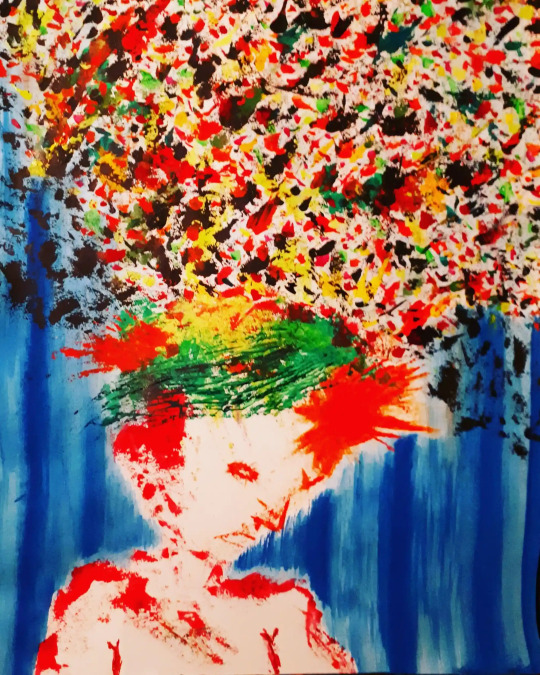
Mind Vomit
‘This represents the daily conversation within my mind. Anxious thoughts, depressive thoughts, sub-thoughts, thoughts about the thoughts, a constant critical commentary and a tornado of darkness, numbness and complete inner turmoil.’
Goya’s disasters of War
Jake & Dinos Chapman
destroyed bodies | Otto Dix
George Grosz
0 notes
Text
Nashville, TN, Entertainment And Culinary Scene
Nashville, the capital of Tennessee, is renowned for its country music, entertainment, and culinary scene. As the 24th most populous city in the US, it offers a variety of entertainment options for residents and tourists. Nashville has a rich history with record labels and venues like the Grand Ole Opry hosting the longest-running live radio show. The city has created its own subgenre, "The Nashville Sound," featuring sophisticated string arrangements and backing choruses. Nashville's culinary scene is also noteworthy, with the 'Nashville hot chicken' dish being a must-try. The city is ranked as the 13th "snobbiest" in America by Travel + Leisure magazine. Nashville is a beautiful city.
Apartments for rent in Nashville
Vertis Green Hills is the No.1 apartment for rent in Nashville. These apartment units are fully furnished with a beautiful nature background. It's conveniently located near Downtown Nashville. The apartments come with daily necessities like linens, bedding, and dishware and are equipped with access-controlled entry and a concierge team. With over 85,000 sqft of dining, shopping, and wellness are available in one place. Vertis Green Hills is a social and serene community with scenic views and inviting amenities like a level 12 sky deck. The community is perfect for jogging in the fitness studio, working in the business center, or relaxing in the resident lounge, so whether you need a furnished studio, one, and two-bedroom, Vertis Green Hills has availability today. For more information, (615) 640-1595.

Nashville Zoo at Grassmere
The Nashville Zoo at Grassmere is a popular destination for visitors due to its vast collection of over 3,500 animals representing over 400 species. The zoo is a leader in conservation and research, dedicated to saving endangered species and protecting their habitats. It offers a fun and educational experience for all ages, with activities for children and adults. The zoo is located on 188 acres of land, offering stunning views of the surrounding countryside. Visitors can learn about animals and their natural habitats through educational exhibits and programs. It's perfect for families and children always enjoy it because they love animals. When you visit, enjoy some attractions, including a behind-the-scenes tour of the zoo's conservation programs, a petting zoo where visitors can interact with animals like goats, sheep, and pigs, and a train ride to see the animals from a different perspective. Also, enjoy the scenery.
Tennessee Serves - Maria Lee survives cancer and serves
Maria Lee, the First Lady of Tennessee, has been involved in her initiative, Tennessee Serves, for almost 15 years. Lee's main focus is supporting him and his work as Bill's wife. She travels the state with him and goes on business trips whenever possible. Lee and her team launched Tennessee Serves in 2019, focusing on various groups and needs, such as first responders, senior citizens, the homeless, and foster children. The initiative encourages people to engage with nonprofits in their community, as government is not the answer to the most significant challenges. Lee believes that when people engage with nonprofits, it changes their community and improves people's lives. Read more.
Link to maps
Nashville Zoo at Grassmere 3777 Nolensville Pk, Nashville, TN 37211, United States Take Zoo Rd to US-31 ALT N/US-41A N/Nolensville Rd/Nolensville Pk 3 min (0.5 mi) Continue on US-31 ALT N/US-41A N/Nolensville Pk to your destination 16 min (7.9 mi) Turn left Destination will be on the left 25 sec (154 ft) Vertis Green Hills 4000 Hillsboro Pike, Nashville, TN 37215, United States
0 notes
Text
youtube
NEXTH Season 4: The best is yet to come. [https://nexth.city/runway] [https://nexthchic.live/]
LIFESTYLE - [NexthChic] 128. Designer Kwame Adusei's Beverly Hills store sparks fashion frenzy!
Ghanaian-born designer Nana Kwame Adusei makes a grand entrance into Beverly Hills with his new store at 468 N Doheny Drive. Taking over a former M+B art gallery space on July 1, the light-filled store showcases Adusei's artistic vision. The centerpiece of the store is a captivating display of four tulle garments, each resembling a light sculpture. With extravagant sizing and ethereal designs, Adusei's store promises a unique and immersive fashion experience in the heart of Beverly Hills.
Originally hailing from Ghana, Adusei initially aspired to be a basketball player. However, due to the high costs associated with schools, he shifted his focus to fashion. He ventured into modeling, studied the fundamentals of fashion, and discovered his passion for designing. This led him to establish his first brand, Charlotte Privé, which specialized in linen garments. Adusei proudly showcased his creations in his two stores located in Ghana, marking the beginning of his fashion career.
In 2019, Adusei made the bold decision to leave his native Ghana and pursue opportunities in the United States. Reflecting on his journey, Adusei explained that Ghana, being a small country, didn't fully embrace the titles of "designer" or "artist." Inspired by renowned designers like Tom Ford and Karl Lagerfeld, who achieved success after leaving their home countries, Adusei sought a new challenge. He dreamt of making his mark and chose the United States as the destination to fulfill his aspirations in the fashion industry.
Initially setting up a small atelier in Downtown LA, Adusei started producing his first designs and witnessed a surge in orders. The rapid growth fueled his decision to open a boutique in the prestigious Beverly Hills area. Adusei's boutique showcased a stunning array of creations. From jumpsuits, pants, and jackets in waxed denim to short leather skirts and elegant black evening dresses, his collection exuded a blend of chic and sexy aesthetics. The designs included cropped biker and moto jackets, oversized jackets and pants, all curated from locally sourced fabrics. Adusei was committed to sustainability, often purchasing materials from dead stocks of fabrics, giving them new life and reducing waste.
The garments possessed a distinct quality, resonating with sound, texture, and life. Comfort was a priority, as Adusei aimed to create fashion that felt comfortable to wear. The racks of his boutique proudly displayed a fusion of style, sensuality, and fabric richness, offering customers an exceptional and carefully crafted fashion experience.
"My brand doesn't necessarily focus on color and doesn't conform to the stereotypes of African fashion with vibrant prints that don't truly represent African people," emphasized Adusei. "However, my designs draw inspiration from African body types. Africa is not defined by skin color, but rather by the diversity of body structures and shapes, much like Asian body types. That's who we are. Africa is about curves and beautiful silhouettes. My aim is to create unique fashion for unique individuals, regardless of their gender. It's important to remember that before colonization, African fashion was genderless, and that's the legacy I'm interested in preserving."
Adusei presented his Summer/Spring 2023 collection in New York in September 2022 and anticipates participation in the upcoming LA Fashion Week in October 2023.
#lifestyle#design#style#fashion#thebestisyettocome#KwameAdusei#aesthetic#minimalist#modern#luxury#art#timeless#elegance#iconic#independent#sustainability#Youtube
0 notes
Text
Banana Republic Wants to Outfit Your Home, Too

Inside Banana Republic’s design studio in San Francisco, Sandra Stangl, the company’s chief executive, pointed to an item that had been creating buzz in stores.It was not a shirt or dress draped on a mannequin. Instead, Ms. Stangl walked toward a king-size bed with a parchment-colored backboard. The company has started putting these bed frames, which sell for around $5,000, near the front of its stores in Los Angeles and New York. Enough shoppers have asked if they were for sale — the answer: Not yet, but Ms. Stangl and her team are taking a limited number of pre-orders for the fall.Shoppers usually think about outfitting themselves, not their homes, when they walk into Banana Republic. But the brand is trying to change that. In March, the retailer announced it would begin selling home textiles, and since then it has rolled out items like throw blankets, rugs and the attention-grabbing bed frames, selling home products online and in 16 of its stores.The home category “gives us a bigger addressable audience,” Ms. Stangl said, standing in front of an embroidered linen and cotton duvet, which the company says is a best seller. She added that offering home goods “stabilizes out the business a little bit.”Throughout the pandemic, the shopping environment for apparel retailers took on a boom-bust pattern. Shoppers stuck at home were first buying yoga pants, then sought work-appropriate clothes when a full-scale return to the office seemed imminent. Now, as many people’s day-to-day lives have settled into more of a hybrid situation, consumers are being even more choosy about their clothing purchases.Banana Republic was no stranger to the retail market’s ups and downs. In the first quarter of the pandemic, the company’s net sales dropped 47 percent. When Ms. Stangl took the top role, in December 2020, Banana Republic’s design team started making attire that was both versatile and comfortable. When it was time to head back to the office, shoppers turned to the store for relaxed yet professional attire. In the first quarter of 2022, net sales rose 24 percent.But after three years of hybrid work, many people were shopping for work clothes less frequently and had stopped viewing the clothes they wore to work as distinct from the rest of their wardrobe. In the first quarter of this year, Banana Republic’s net sales fell 10 percent.Even before the pandemic, Banana Republic faced falling sales and struggled to attract customers without a 40 percent markdown. As it lost customers, it began closing stores, going from 566 in 2019 to just over 400 in January 2023. The same month, Banana Republic said it would shutter its two-story flagship in San Francisco, where its corporate offices still are. It will soon open a smaller flagship location, which will sell home products and a new art collection, available now. The retailer also started selling athletic wear and clothes for babies and toddlers.Banana Republic’s push to sell goods beyond clothes isn’t new. It follows a familiar playbook from other companies that have sought to cast themselves as “lifestyle brands” to inspire shoppers to buy into all manner of products from them.Banana Republic is looking for a “long-term strategy of building brand relevance,” Corey Tarlowe, a retail analyst at Jefferies, said.“Banana Republic is not one of those companies that you think of that are doing amazing,” he added. “There’s been so many problems for this Banana Republic business over the last 10 years. They’re trying to see these opportunities and figure out what works.”The problems are even more acute because its parent company, Gap Inc., is in flux. In April, Gap said it was laying off 1,800 workers, or about 9 percent of its work force, to save $300 million. A month later, the company said sales at all of its brands, which also include Old Navy and Athleta, had declined in the most recent quarter. Gap’s stock has decreased 16 percent since the start of the year, and the retailer has been without a permanent chief executive for a year.Changing the perception of a store among shoppers is not easy. Marcela Diaz swung by one of Banana Republic’s San Francisco stores on a recent Wednesday afternoon to check out some clothes, holding a bag from Zara that contained a pair of silk pants.Ms. Diaz, a self-described casual dresser, said that coming out of the pandemic, Banana Republic came to mind when she was looking for apparel appropriate for professional meetings.“As I’ve gone back to work, I’ve been shopping more with Banana Republic online,” said Ms. Diaz, who works at a nonprofit in Santa Fe, N.M., and left the store without making a purchase.While some shoppers and even Ms. Stangl see the term “work wear” as passe, Banana Republic still has a dedicated section on its website called “The Workwear Edit.”Angela Branch, a 39-year-old working at a university in Chicago, was also drawn to Banana Republic’s online store. She said she had always thought of its clothes as “business business” but bought a lightweight cashmere sweater and utility pants because they worked well for both the office and weekend brunch.Before the pandemic, she used to have a section in her closet dedicated to work wear, and she frequently added to it. But now her clothes need to be more versatile, she said, and concerns about the economy have curbed her spending even more.“I’ve definitely slowed up a lot because I don’t really need anything,” Ms. Branch said.But Banana Republic’s nascent home décor line, she said, could make her want to keep spending there.Eric Ford, a 30-year-old working in marketing in New York, echoed that sentiment. His mother introduced him to Banana Republic when he was younger, but until recently, the brand had felt irrelevant to him. The push to sell décor and furniture comes at a time in his life and career when he’s ready to put money toward those kinds of purchases.“I literally told myself 30 is the time where, like, all my money is going to my closet, my home and me traveling,” Mr. Ford, who lives in Brooklyn, said.Analysts are still skeptical that Banana Republic’s home goods strategy will find widespread success. The company is up against the more established businesses of Ralph Lauren, H&M, Zara and Restoration Hardware. (Ms. Stangl, Banana Republic’s chief executive, was once the chief merchant at Restoration Hardware.)“You’re not going to be Restoration Hardware by any means,” said Liza Amlani, the founder of Retail Strategy Group, a consulting firm. “Banana has a lot of competition, and they should just really scrap that whole idea” and remain focused on clothing, she added.Aaron Rose, Banana Republic’s chief commerce and experience officer, said there was room for the retailer to succeed, noting that no company has more than 5 percent of the home market and that “there’s plenty of opportunity for everybody.”And if the home business proves to be a success, Banana Republic has other ideas.“Do we see ourselves going into hospitality? Sure. And restaurants? I think there’s a place for that,” Ms. Stangl said. “We’re dreaming about what travel means to us and to our brand. There’s something there, right?” Source link Read the full article
0 notes
Text
Joline Jolink makes biodegradable fashion: 'Fashion should not be at the expense of the earth'
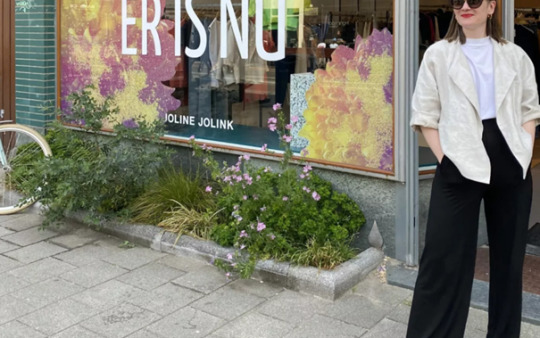
Joline Jolink in front of her shop in Rotterdam.
From vegan grape leather sandals to a biodegradable linen jacket. The Rotterdam fashion designer Joline Jolink hopes to change the fashion industry from within. “Everyone sees that things can no longer go on like this.”
Joline Jolink started her label in 2006, after completing her fashion studies at the Artez and Fashion Institute Arnhem.[1] “Everyone said: there is little market for fashion in the Netherlands, you have to go abroad for that. So I did. But soon I started to think differently about it.” Around her, she sees how mass-produced clothing is sold at an ever lower price and what consequences this has for the makers of the clothing and the planet. “The more I learned about it, the more I realised that this is not a sustainable situation for the future. Things need to change,” she says.
Sail your own course
She decided to steer her own course and to do business according to her own values. In 2008 she became the first Dutch designer with her own web shop and was no longer dependent on buyers. In order to “break free from the system” even further, she also stopped sales in 2016 and campaigned against Black Friday.[2] “I produce as sustainably as possible and make timeless products. By consciously not making too much, a sale is not necessary.”
With the design of a vegan sneaker in 2019, she takes another step. In 2021 she will launch the sale of second-hand clothing under the name New Love. And this year, the vegan grape leather sandal and a biodegradable linen jacket will be added. “I want to show that it is possible, that it is possible to make more sustainable choices. That you can include consumers in that process. I still think fashion is magical and design is still fantastic, even within the 'limitations' I have imposed on myself. There are always options, if you are creative. Fashion should not be at the expense of other people or the earth.”
Grape leather sandal
After launching vegan sneakers, biodegradable sneakers and apple leather sneakers and boots followed. [3] This year, Jolink adds grape leather sandals to its collection. The grape leather comes from Portugal, where it is processed in a family business. “The slide slipper is tough and chunky. Grape leather is made from residual flows from the wine industry. It is a nice alternative to materials that are made entirely from fossil raw materials or animal skins,” she explains.
The slippers consist of 55 percent grape residues and other natural fibres from agriculture and 45 percent water-based polyurethane. Jolink: “These sandals are largely composed of renewable and recycled plant materials. They are 100 percent vegan, human and animal friendly.”
Biodegradable jacket
In collaboration with The Linen Project[4] and Enschede Textielstad[5], Jolink also launched a biodegradable jacket a few weeks ago. “It is made from Dutch linen, the flax of which grew on the Horsterhof farm in Duiven[6]. Organic cotton stitching thread has been used and no zippers or buttons have been added. The labels are printed with natural paint. This makes the design biodegradable. After hopefully a hundred years or so, after being worn and passed on, it can go back into the ground. The material is then once again food for the earth.”
She is very proud of this project. “With this we show that it is possible to achieve a beautiful end product with a local chain for raw materials. It is a very precious material, but as a designer I have decided that it is important to me that this story is told,” she says.
Don't stay unique
Her ultimate dream is that she will not remain unique in the use of these types of materials. “By investing in such a linen jacket, I want to show everyone: look, it is possible. It would be fantastic if a larger party, with much more impact, also tacks after me. When chains decide to make more sustainable choices. I throw the ball up, but I hope that I actually set something in motion. I don't want to be unique in this," she says.
Source
Chantal Blommers, Joline Jolink maakt biologisch afbreekbare mode: 'Fashion mag niet ten koste gaan van de aarde', in:Change Inc, 22-06-2023, https://www.change.inc/retail/joline-jolink-maakt-biologisch-afbreekbare-mode-fashion-mag-niet-ten-koste-gaan-van-de-aarde-40102
[1] The four-year bachelor course Fashion Design, a component of the faculty Art & Design at ArtEZ University of the Arts in Arnhem, has a long and illustrious history. The department of Fashion Design and Fashion Illustration was founded in 1953 by Dutch fashion legend Elly Lamaker, and despite its humble beginnings, soon established its rightful place in the eyes of existing visual art institutes, the fashion industry, and comparable international design programmes. The fashion programme of ArtEZ Art & Design Arnhem continues to set the standard for education to this day. Since that time, the Fashion Design department at ArtEZ has continuously thrived. A highly skilled team of more than 20 lecturers stands ready to share their expertise with the 100-plus students, both local and international. There are two freshmen classes with 20 students each, and class sizes in the subsequent years vary between 20 and 25 students. https://arnhemfashiondesign.nl/en/information
[2] Black Friday is a colloquial term for the Friday after Thanksgiving in the United States. It traditionally marks the start of the Christmas shopping season in the United States. Many stores offer highly promoted sales at discounted prices and often open early, sometimes as early as midnight[2] or even on Thanksgiving. Some stores' sales continue to Monday ("Cyber Monday") or for a week ("Cyber Week"). Black Friday has routinely been the busiest shopping day of the year in the United States
[3] Read also: https://www.tumblr.com/earaercircular/677442405046321152/we-make-a-sneaker-out-of-apples?source=share
[4] Initiated by ArtEZ MA Practice Held in Common and Crafts Council Nederland in 2018, The Linen Project investigates and works towards reactivating the economic viability of small-scale local flax cultivation and linen production in the Netherlands. The Linen Project’s various activities are developed with a view to its broader relevance. Establishing a dynamic environment for research and production, the learning by doing approach to all stages and forms of flax and linen production unites and highlights the value of our natural, social and cultural resources. https://thelinenproject.online/about/
[5] Enschede Textielstad is an industrial weaving mill where fabrics for the fashion and interior industry are produced with natural and local yarns. It is our goal to produce as locally as possible and to provide brands that are already involved in sustainability and/or reshoring with high-quality fabrics in an accessible manner. We are currently developing fabrics such as chambray, canvas and upholstery fabrics for various brands and designers. Raw materials for this include recycled denim, recycled cotton (both post-industrial waste and post-consumer material), recycled PET, Tencel, hemp and flax. To indicate the possibilities, we have developed a small basic collection. However, we normally produce demand-driven. https://enschedetextielstad.nl/over-ons/
[6] De Horsterhof is an organic farm near Arnhem. Our goal? Reconnecting people with nature. We grow a wide variety of local and seasonal vegetables. https://horsterhof.nl/
0 notes